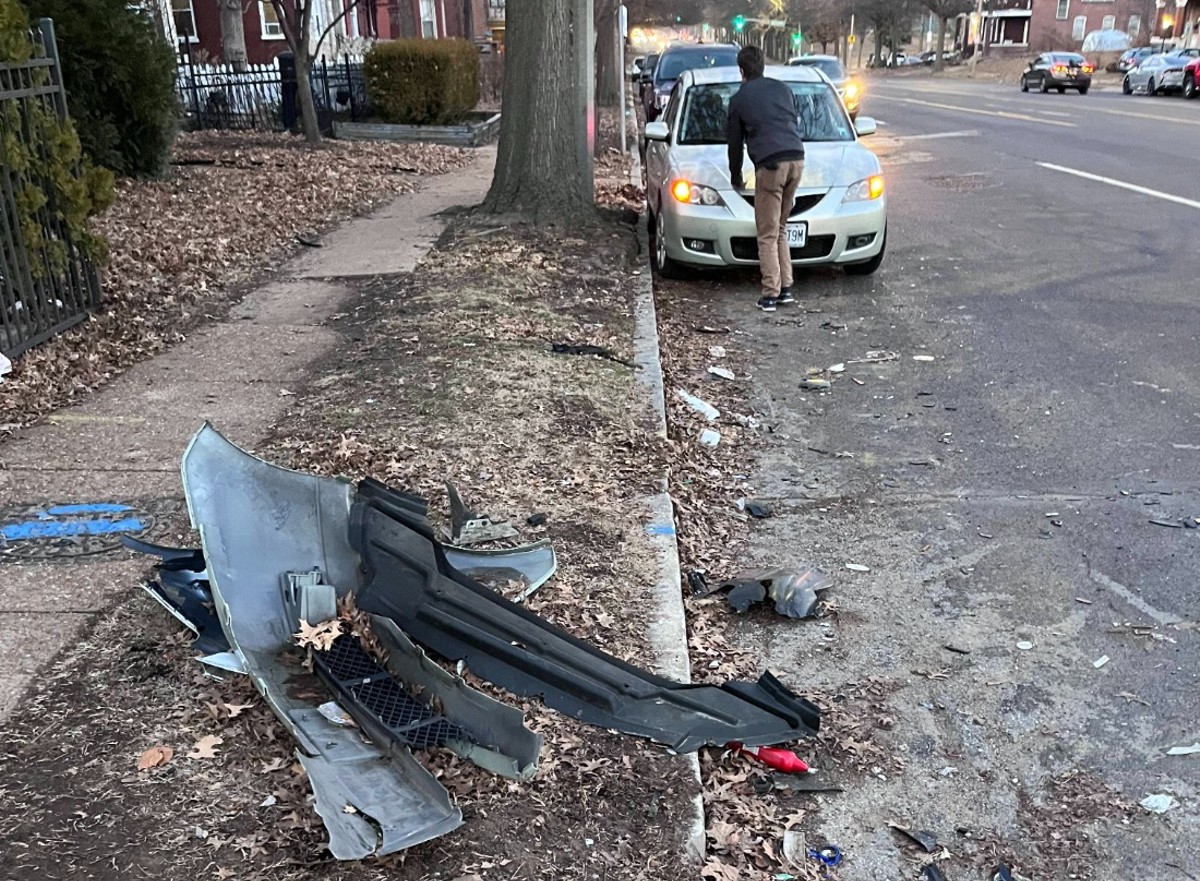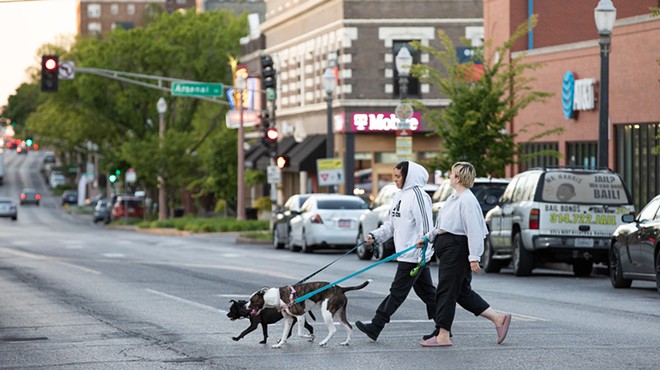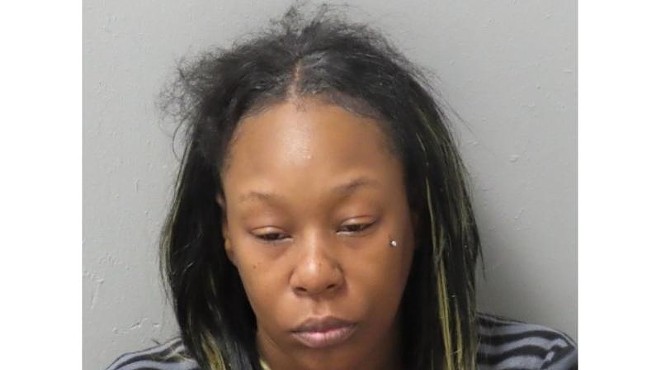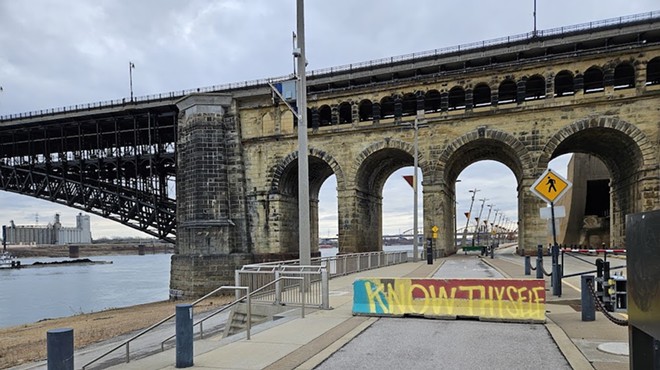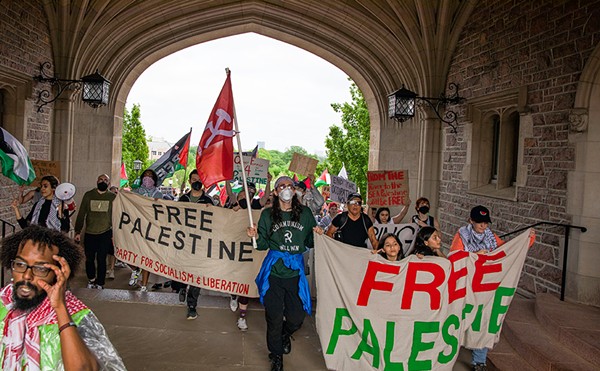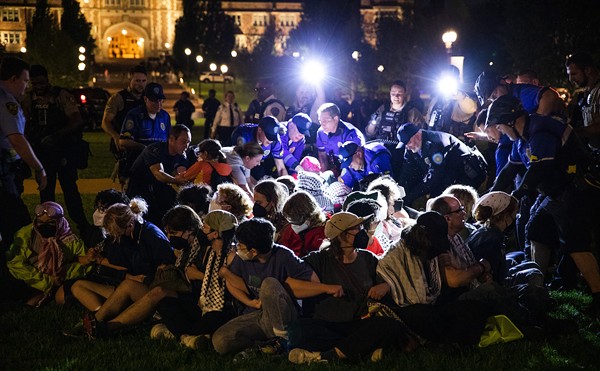We are inured to the violence of our car-centric transportation system. Crashes are just part of the deal, right? As drivers we accept the inconvenience of a lane closure, perhaps the fleeting gratitude that we weren't involved this time, and we move on. As long as it wasn't me. We hurry to our engagements, and we look away. Even when crashes result in financial turmoil, physical trauma and even death, we, as a society, are all too willing to accept them as inevitable costs of an inevitable transportation system.
On a walk home early on January 8, 2024, I saw flashing emergency lights and decided not to look away.
In the distance, I saw a clump of police SUVs, fire trucks, cars askew and a Metrobus stranded in a kerfuffle at Utah Street and South Jefferson Avenue near Benton Park in south St. Louis. A handful of bus riders were now walking the two blocks to the next nearest bus stop, where they would wait without shelter in the drizzle and near-freezing air. I spoke to a few of them. They told me that there had been a three-car crash, severe enough for one of the cars to lose its axle, that the entire street had been blocked, preventing their bus from getting through. The irritation in their voices – over the delay, over people driving "crazy" especially in wet conditions – was palpable.
I ran home to get my phone and proceeded to the crash site. On the way, I noticed a stream of cars diverted from their route, speeding down Texas Avenue, a normally quiet side street. Once I arrived, I saw that, indeed, the entire width of South Jefferson – two southbound lanes, two northbound lanes, a middle turn lane and a parking lane on either side – was closed. The crash site stretched the length of a city block. Law enforcement officials were directing cars and buses off the main arterial and onto secondary neighborhood streets.
Firemen bustled back and forth. One car was on the platform of an orange City of St. Louis Towing truck; another, its front demolished, sat in wait on the opposite side of the street. A police officer used a leaf blower to blow shattered car parts to the curb. (The shards and one of the cars' bumpers remained there a month later.) One firefighter brushed glass off the driver's seat of a third car whose window had shattered; another spoke to the driver, who explained she'd be going to an urgent care on South Grand before attempting the drive home.
"What happened here?" I asked one of the passing firemen.
"Car accident," he said, in a tone that asked if I was oblivious to the wreckage.
"Was anyone seriously injured?" I asked.
"No," he said, and added a remark of surprise.
The police blocked off the west side of Utah, where the second car, possibly totaled, lay. The City Towing truck moved into position and the operator employed something like a two-headed mechanical snake and after several methodical adjustments hooked it around the axle of the car.
These people know what they're doing.
Across the street stood a group of folks next to a St. Louis Fire Department ambulance. A medic tended to someone on the ground. The patient was small, their arms flaccid as the medic lifted them up. Shortly after, the patient on the ground began seizing, and another medic vocalized clear, comforting words. A police officer in a yellow raincoat waved vehemently for an ambulance parked nearby to advance to the spot. The vehicle belonged to Abbot EMS, the region's largest private ambulance company. Does this not qualify as a "serious" injury? I wondered.
A BP gas station stands on that corner. Under the neon glow, motorists fueled their cars, unfazed by the wreckage. I decided to see if the cashier knew anything about what had happened. "Car accident," he said.
There's that word again: accident,an unforeseen and unplanned event or circumstance.
But the presence of a task force of public servants who close streets, push debris out of lanes, sweep glass off of car seats, tend to injured commuters and assemble totaled cars on a City Towing truck indicates that the circumstances of this crash are foreseen, in fact, expected. What I witnessed that night was a publicly funded apparatus, augmented by private medical companies, that exists because we know these crashes will happen and have planned around them.
It's a well-worn choreography on a familiar stage.
I lingered by the ambulance after exiting the gas station. The person on the ground was no longer there, but I could see activity inside the brightened windows of the Abbot EMS ambulance. A young man stood nearby. Later, when I asked if he was involved in the crash, he explained to me that he lives in Spanish Lake and was driving to meet his brother when the patient now in the ambulance hit him head on. She was driving too fast, he said.
A police officer moved in and asked the tall young man who had been involved in the crash, "So you know what's going on? You know what you need to do?" The young man didn't respond. "7410 Hall Street," the officer persisted, and began giving directions to the site where the city's Towing Division keeps towed cars. The young man asked if he would have to pay to get his car back. "Well, you may not get it back. It might be totaled," the officer responded. As the street opened, emergency vehicles dispersed, and traffic resumed, the young man told me that he was "broke" and didn't know what he was going to do.
Many are now familiar with the automobile violence that cost 17-year-old Janae Edmondson her legs. And the hit-and-run that killed cyclist Danyell "Starr" McMiller. The crash that took the lives of Anthony Robinson, Richard Boyd, Bryanna Dentman-Johnson and Corntail McKinley when a driver ran a red light, struck the SUV they occupied, and thrust it over the South Grand overpass and upside down onto Forest Park Avenue.
But the crash I came upon would not make headlines. It's not tragic enough, not sensational enough. Bus riders delayed and forced into the freezing rain; motorists detoured and delayed; a trip to the urgent care; a trip to the hospital and what is likely to be a very costly ambulance ride; two totaled cars and a busted window; a distraught young man who just wanted to meet his brother; hours (days? weeks? months?) of stress to resolve a cascade of personal crises; the captured time and attention of a platoon of medics, traffic officers and firefighters funded by public dollars – it's all just too commonplace to be noteworthy. It's the system we abide.
And we will find all sorts of ways to justify it – namely, how horrible St. Louis drivers are, although, as a cyclist and pedestrian, most of my interactions with drivers in town are cordial, and traffic violence and the inefficiency of cars is a nation-wide crisis. It's just all too normal.
We need a new normal.
We need a paradigm shift. We need a human-centered transportation system. We need to stop pretending that cars are all that automobile manufacturers and city planners have promised them to be. We need to stop passively individualizing a collective crisis. And until we declare, plainly and unflinchingly, that The Car is the source of traffic violence and a system of negligence, we will be pursuing solutions in bad faith.
Christian Frommelt is a freelance writer and artist residing in Gravois Park. They are a co-creator at CarfreeSTL, an advocacy hub for realizing sustainable, equitable and pleasurable transportation in St. Louis. You can reach them at [email protected] and on Instagram at @peddlingrhythm and/or @carfreestl.
The RFT welcomes well-reasoned essays on topic of local interest. Email [email protected] if you've got something to say.
Subscribe to Riverfront Times newsletters.
Follow us: Apple News | Google News | NewsBreak | Reddit | Instagram | Facebook | Twitter | Or sign up for our RSS Feed

